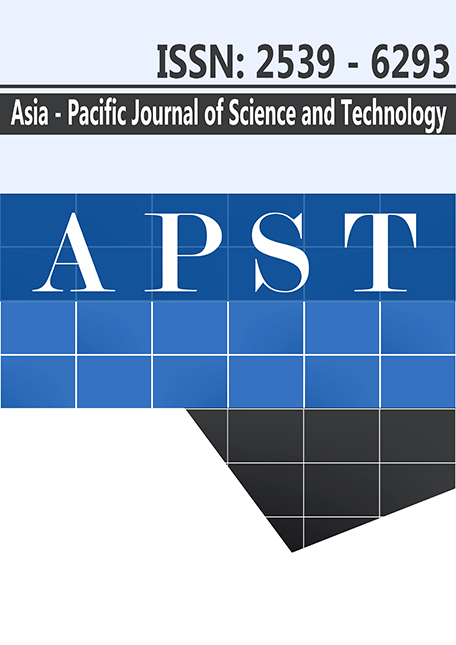Drinking water quality and evaluation of environmental conditions of water vending machines
Main Article Content
Abstract
A survey of 55 water vending machines in Chiang Khruea Sub-district, Mueang Mistrict, Sakon Nakon Province was conducted to evaluate the water quality from vending machines and environmental conditions of their locations. Laboratory analyses of the samples consisted determination of pH, turbidity, total solids, total dissolved solids, hardness, total coliforms, fecal coliforms, in addition to a survey of the general hygienic conditions of each location.
The results showed that the turbidity value met the drinking water standard and the pH value baseline was in the range of 6.5-8.5. Some of the water samples exceeded the government’s drinking water standard. Hardness values set by the Public Health Act of 1992, under the Department of Health are 100 mg/l or less as CaCO3. Total coliform bacteria were in the range 2-2,400 MPN/100 ml and fecal coliform bacteria were found to be 0‑2 MPN/100 ml. Sanitation of the surroundings was evaluated according to six criteria.
It was determined that there should be an improved level of recording and reporting as well as increased drinking water quality control. Maintenance and the hygienic condition of the machines were poor. Government regulators should control the entrepreneurs and monitor drinking water quality. Entrepreneurs should always maintain water quality standards according to government regulations.
Article Details
References
different localities in Abbottabad district, Pakistan. International Journal of Physical Science 6,7480-7489.
[2] Pratum, C., Khananthai, N., 2017. Assessment of Factors Affecting Drinking water quality from Free Water
Dispenser in the higher Education Institution. International Journal and Science Education 12, 787-797.
[3] Jeena, M.I., Deepa, P., Rahiman, K.M., Shanthi, R.T., Hatha, A.A.M., 2006. Risk assessment of
heterotrophic bacteria from bottled drinking water sold in Indian markets. International Journal of Hygiene
and Environmental Health 209, 191-196.
[4] Handbook of Drinking Water Vending Machines., 2013. Business Detrimental to Health, in Public Health
Act 1992 and the Ministry of Public Health. Bangkok.
[5] Malakootian, M., Mansoorian, H.J., Moosazadeh, M., 2010. Performance evaluation of electrocoagulation
process using iron-rod eletrodes for removing hardness from drinking water. Desalination 255, 67-71.
[6] Moosa, M.E.A., Khan, M.A., Alalami, U., Hussin, A., 2015. Microbiological quality of drinking water from
water dispenser machines. International Journal of Environmental science and Delvelopment6 9, 710-13.
[7] Ministry of public health.Drinking water standard., 1992. Public health act.
[8] Ravadchai, N., Sungsitthisawad, W., 2012. Factors affecting drinking water quality of vending machines
KKU research journal. Khon kaen: Khon kaen University.
[9] Szabo, J., Hall, J., 2015. On-line water quality monitoring for drinking water contamination. Comprehensive
Water Quality and Purification 2, 266-268.
[10] Szabo, J., Hall, J., 2015. On-line Water Quality Monitoring for Drinking Water Contamination. Sciences,
from Comprehensive Water Quality and Purification 2, 266-282.
[11] American Public Health Association Inc., 2012. “Standard Methods for the Examination of Water and
Wastewater,”.22nd. American Public Health Association Inc, Washington DC.
[12] World Health Organization., 2011. Guidelines for drinking water quality 4 th(ed). The World Health
Report.Geneva, Switzerland, 1-18.


